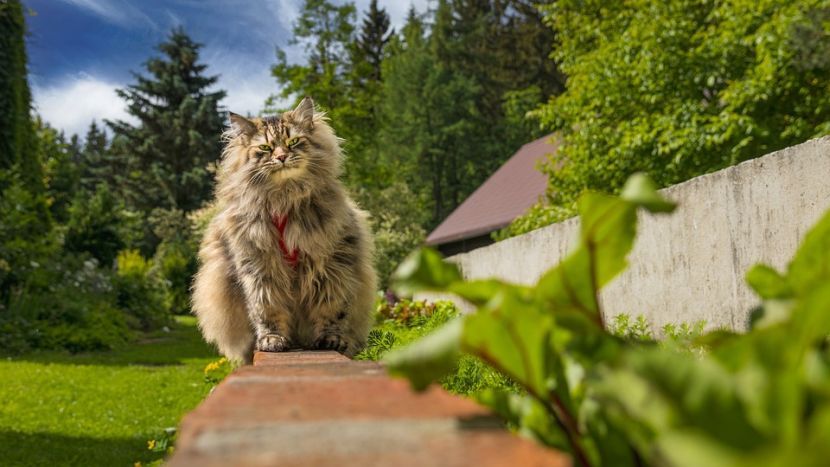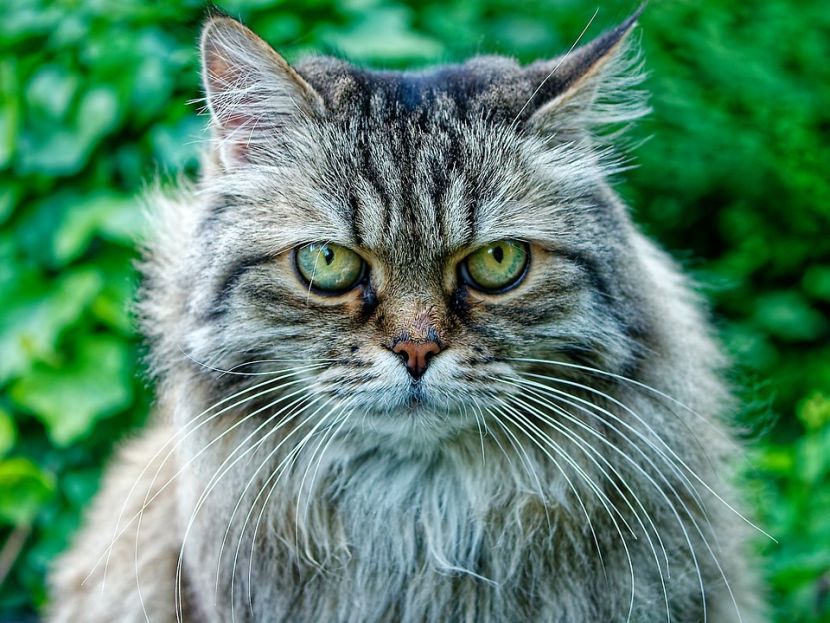
One of the shaggiest and cuddliest cats with a rich "mane" is considered hypoallergenic and very meticulous: never leave it alone, however, because it will turn your home and furniture into a horror movie!
The Siberian cat, a beauty from the snowy forests of Russia, is considered an independent and very resourceful pet.
It is a medium-sized semi-longhair cat with a breathtaking appearance and is one of the favorite breeds. She is very sociable, friendly and energetic, enjoys the company of other cats and even dogs and gets along well with children who treat her gently and respectfully.
The weight of this cat is 6.5 to even 10 kilograms, and the length is 40 to 65 centimeters. It can live from 10 to 18 years.
History of the Siberian cat
The Siberian cat, originally from Russia, is believed to be thousands of years old.
there are several theories about its origin, from the crossing of the Angora cat with the domestic short-haired cat to the fusion of the Norwegian forest cat with an ordinary, domesticated cat. In Russia, this cat was kept as a pet on estates for a long time, where it hunted rodents.
For the first time, at the end of the 19th century in England, a Siberian cat was shown at an exhibition, but it was not noticed. It was described in the book "Our Cats and All About Them" by Harrison Weir, which was originally published in 1889. The US saw the Siberian cat for the first time after the 1990s and it was love at first sight.
The breed was accepted by TICA in 1996, by FIFe in 1997, and in 2002 by WCF (World Cat Federation). In 2006, it was recognized by the CFA (Cat Fanciers Association).
Appearance of a Siberian cat
There is a lot of similarity between the Maine Coon, the Siberian cat and the Norwegian forest cat, so many cat lovers do not distinguish between them. All three breeds have long, thick and "greasy" hair that protects them from low temperatures.
Her head is wide, and around her neck she has a mane that is considered an exceptional decoration. Their cheeks are full and their ears have unusual pointed tips, giving her an appearance of constant vigilance.
Her tail is overgrown with thick, thick hair, so the entire rear part of the cat's body is shaggy.
The Siberian cat has a modified wedge-shaped head with rounded contours, a moderately short muzzle with a slight curve, and medium to large, almost round eyes in shades of green, gold, green-gold or copper (white cats can have blue eyes or eyes of two different colors).
Her luxurious, thick, full coat can be coarse or soft, in any color or pattern, with or without white markings. She has three layers of fur: a shorter, dense undercoat (the hair closest to the skin); a layer of longer "hair" in the middle and an even longer layer of outer hair.
The seasons affect her three-layer fur. The undercoat has a soft part that warms it, and the upper part is characterized by sharpness, so it repels snow or rain that simply slips off the cat.
When it's warm, the Siberian cat will shed its heavy coat and "stay" in the thinner summer "variant". It is claimed that Siberians in Russia are mostly black or red fur, so their appearance is slightly different from other Siberians outside this area.
"Siberian" temperament
This kitty is intelligent and extremely entertaining. She matures slowly, so she needs as many as five years to overcome the "antics" of the machete. He likes to climb, explore and play. To keep her mentally stimulated and physically engaged, expose her to fun toys and play lots of games.
She can learn to respond to her name, climb high surfaces and is very agile. Do not leave her alone in the home, without anyone's supervision, because she tends to break objects. She is loyal to her owner, loves to be petted, but does not demand too much attention. She knows how to have fun by herself and loves some "dog" games.
Care, health and nutrition

Even with thick, long hair, this cat is considered a hypoallergenic breed.
Most people allergic to cats are sensitive to a protein in their saliva known as Fel D1. This protein is found in the cat's skin cells and the dried saliva and urine residue that coats the cat's fur.
Siberian cats, thanks to the low concentration of this protein in their saliva, almost never cause allergic reactions.
They love water and often come to bathe alone. Owners have seen these kitties wash their paws by themselves!
Trim their claws regularly and check the cleanliness of their ears. Occasional baths will remove dead hair and dandruff.
Hypertrophic cardiomyopathy, a form of heart disease that causes the heart muscle to thicken, is more common in certain cat breeds, including the Siberian. Mutations in several genes that affect heart health have been identified in some cats with this disease.
Responsible breeders check their cats for this disease to avoid breeding infected cats and passing them on to future generations.
Consult your veterinarian about food choices for your Siberian. Although dry food is more convenient to purchase, canned food contains fewer carbohydrates and has a lot of additional moisture. Most cats don't drink enough water, which can affect their health, including kidney health. Feed the kitten with measured amounts of food


